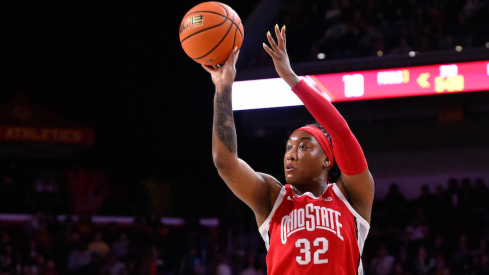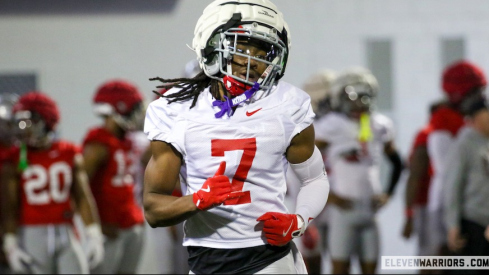 Worship the grail of the student-athlete
Worship the grail of the student-athleteWhat, pray tell, is a student-athlete anyhow? Does it differ from an athlete-student? Nearest we can tell, it's nothing more than a buzzword the NCAA has created to deflect other prejudicial terms such as "employee," "business," and "injunction."
Justice Potter Stewart said in 1964 in his opinion of Jacobellis v. Ohio that he could not define pornography, but "I know it when I see it." To be perfectly honest, I cannot define student-athlete, but I know a rat when I smell it.
The NCAA, which is nothing more than a self-policing organization made up of university presidents and several smaller governing councils, has essentially been operating a cartel that protects itself from antitrust implications, paying labor to unpaid interns and operates as a tax-free shelter. It's all cleverly done using these carefully selected buzzword to serve the IRS purpose of functioning as "primarily educational."
Whether you're sympathetic to these unpaid athletes, or you think they should pipe down and be happy they're getting a free education, I think we've reached a point of mutiny in agreeing there is some level of exploitation at work. From the beer-guzzling, foam-finger-waving tailgaters to the white collar, wine-and-cheese crowd, the cartel has been receiving a rash of unwanted publicity.
While the problems are many, the solutions seem to be elusive -- at least to those in power. The decision-making bodies don't see a problem for reasons I'll explain later.
This past week, H.G. "Buzz" Bissinger, most known for authoring New York Times bestseller, Friday Night Lights, offered the granddaddy of all solutions: eliminate college football entirely.
Bissinger concluded in a Wall Street Journal column that college football simply interferes with the mission of higher learning. He believes that subsidizing athletics is a waste of resources, and further makes a mockery of academics.
I admit that when I want insightful football commentary, the WSJ isn't typically the first place I turn. When it comes to finance, however, I raise the bar just a little bit. I expected more of a well-reasoned response.
It could be this is merely a play for clicks. Perhaps it was a trial balloon concocted in an Upper East Side Manhattan nightclub over a cosmopolitan while listening to a friend regale his story of how he made it big in the 1990's dot-com bubble. That would be ideal, as it gives Bissinger an alibi for his sanctimony and he's not as crotchety as he purports himself to be. The scathing tone is a living caricature of Bobby Boucher's mama from The Waterboy.
"Fool's ball...bunch o' overgrown monsters manhandling each otha."
No sir; fool's ball's not the devil.
He surmises, on a false premise no less, institutions are robbing Peter of his hard-earned collegiate fund to pay Paul, who's pursuing a dead-end athletic career. If anyone is being robbed by the student-athlete scam, it's the athletes who are being deprived of access to the free market.
Most Division I athletic departments operate as auxilary organizations under the university umbrella with separate accounting structures. They're essentially non-profit organizations, complete with the do-gooder sentimentality and propaganda buzzwords. Like any NPO, there technically are no shareholders; no wealthy venture capitalists realizing a return on investment. But like any good cartel, a select group is running the show and making a pretty penny in the process.
These departments make money in two forms: general and allocated revenue. The lion's share of the money is earned from ticket sales (30.4% for Ohio State in 2009-10), booster donations (22.1%) and conference payouts (19.4%) which include NCAA Tournament revenue, bowl payout and television rights fees. Parking, concessions, marketing, licensing and sports camps are also part of general revenue, which comprises roughly 75-80 percent of the revenue stream for FBS institutions.
It's allocated revenues that seem to be the the cause of common misconceptions about athletics finances, and also the source of Bissinger's vitriol.
Simply, allocated revenue is money from an institution or government entity that is ongoing. The NCAA Revenues & Expenses report for 2011 show that in 2009-10, the median institutional support received was $2.2 million for public universities and nearly $11 mil for private schools. That seems like prima facie evidence of Bissinger's gripe, but wait... there's more!
The NCAA report also shows that 68 of 120 schools turned a 'profit' in 2010. Profit is a misleading term, as no one is actually realizing the profits, so we'll aptly call it a surplus. On the other hand, a 2010 article by the AP reported only 14 universities made money. The difference has everything to do with counting or not counting institutional support as revenue. It's fancy accounting magic.
You might think it's intuitive not to count institutional support to determine whether athletics are self-sufficient. The problem is they spend the money on the expense side of the ledger knowing it's money they'll have in revenue, except it won't actually count as revenue. Neat trick, huh? Say you have a $300 surplus in your personal budget then add on a $400 car payment on the expectation you'll have $500 coming from a new roommate. By the NCAA accounting standards, you're losing money since you're now $100 in the hole.
Many schools that do have a surplus wind up returning all or most to the university. Some schools, like Ohio State, receive no consistent revenue from the university and are almost entirely self-sufficient. However, of great importance to Bissinger's draconian measure is that football and men's basketball must fund almost the entire athletic department. Data from the Equity in Athletics Disclosure Act show OSU reported nearly $80 million in revenue for 2010 from those two sports combined.
That money, combined with the rest of the revenue, must cover salaries of athletics personnel, pay for the costs of travel and assistance for over 500 athletes and provide for overhead and facilities' maintenence. Because of Title IX, money spent on men's sports must be spent equally or greater on women's sports, although there are many tricks-of-the-trade for fudging those numbers; but that's another story for another day.
Using his narrative, another B1G institution, Minnesota, flushed $2.9 million down the toilet in 2010 with institutional support. What he doesn't consider is that someone is footing the bill for the cost of these scholarships. Universities aren't just letting athletes come into lecture halls free of charge. Athletics are covering the cost of these scholarships for the athletes that might not otherwise attend the university. As such, the Golden Gophers cut a check back to the university for $8.7 million to cover grants-in-aid.
And there may be indirect perks, too.
One 1992 study at Western Kentucky University found that spikes in enrollment were actually tied to the success of its football and men's basketball program. The report found that simply going .500 over the previous two seasons in basketball, over zero wins, and making a postseason appearance in football, was worth a combined 1,200 additional students.
The National Center for Education Statistics shows WKU currently has an in-state tuition of $7,200 and out-of-state cost at $16,151. With an 82 percent in-state enrollment, that's a proportional increase of $10.6 million for additional tuition assuming those extra thousand bodies arriving on account of athletics. That certainly mitigates their spending $7.7 mil in 2010 on support, while receiving back only $5.4 mil in tuition payments.
Some studies have even suggested that annual giving to the university increases on account of athletics. Though few studies have been able to tie that into actual success, a Master's Thesis by Auburn graduate Christopher Whaley in 2006 found football alone was worth an average of $3.3 million in additional donations. The study was based on a regression model from 2004 that examined 657 total universities. No clarification in the study on how much the Auburn football players were able to solicit from donors (*zing*).
The student-athlete charade certainly exists, but it's hard to accept Bissinger's postulation that athletics deter from the academic mission. Instead, the anger needs to be redirected at the cartel.
Practically speaking, athletics are run by presidents, conference commissioners and athletic directors. The bowl executives also have balls in a sling, but they're akin to the slimy street agents involved in recruiting.
Last year, the NCAA had 171,575 proud Division I "student-athletes." Somewhere in the neighborhood of 80,000 of them were on full or partial scholarships. Over 340 institutions combined on a reported $6 billion in general revenue. About $1.7 billion was paid back to those 80,000 athletes ($21,250 per student).
That's a nice slice of pie. It sure isn't the Betty Crocker that the cartel received.
A review of Form 990 tax returns for 27 of the 31 major conferences revealed $10.1 million spent on the salaries of those 27 conference commissioners. That's $375,601 per commish.
Data combined from USA Today's athletic director salary database, NADA's salary survey's and other published reports show over $110 million earned for 343 athletic directors. That's over $320,000 per A.D.
Finally, data compiled from EADA disclosures for 2010 show that a total of $545,916,942 was spent on 2,447 head coaches of male sports at Division I universities. Thats $223,096 per coach.
Collectively, these three positions combined for over $665 million paid to less than 3,000 individuals ($236,364) or more than 11 times the money being spent for each 'student-athlete.'
These are the people that continually vote to maintain the student-athlete illusion. Exploitation for personal gain? This must be how Dora the Explorer feels. The truth is that Disney and Viacom have nothing on the NCAA and its hyphenated wordplay. Student-athlete may ultimately be a euphemism for player, but the players are getting played.
Despite the saturation of emphasis on Division I athletics, the athletes are ultimately creating a lot of brand identity for universities. That marketing only advances, not detracts, from the academic mission. In the process, thousands of athletes are given a shot at secondary eduction that otherwise would not. Taking away football is not just punishment for the select players using college football as a stepping stone to the NFL, it's also a death sentence to thousands of athletes that depend on FBS revenue to further their education.
So let's revisit the definition of student-athlete, shall we? Responsible for a multi-billion dollar industry; often exploited, while willingly screwed; easily blamed; young and people pay to watch. I suppose Justice Stewart was correct...we do know pornography when we see it.

